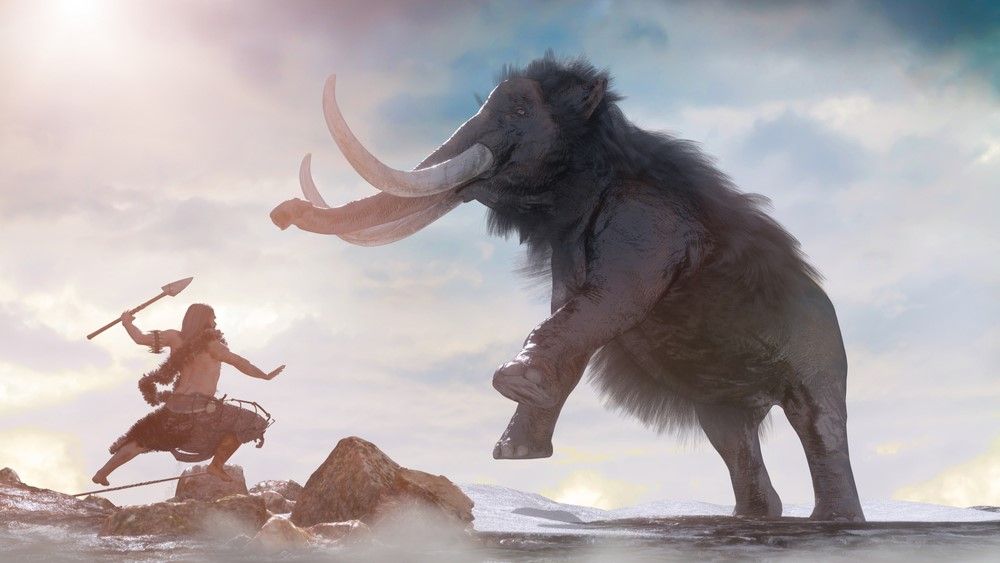
Some of the bones at the site show signs of being handled by humans or even being used as tools, which is "some of the most conclusive evidence" yet that humans settled in North America much earlier than experts previously thought, according to the new study.
If the team is correct about human activity at the site, it would almost double the amount of time humans have occupied North America.However, determining the exact date that people first appeared in North America has been a controversial subject over the past few decades, and similar studies have been dismissed as inconclusive.
The new site was discovered on the Colorado Plateau in northern New Mexico, after hiker Gary Hartley spotted a chunk of tusk protruding from the surface.Researchers named the site the "Hartley mammoth locality" in his honor. .
Until the early 2000s, archaeological evidence had suggested that the Clovis people — a group of early humans who can be identified through distinctively shaped weapons — were the first humans in North America, arriving around 13,000 years ago.But more recent finds have revealed that there was likely a genetically separate group of humans, known as pre-Clovis people, living in North America before the Clovis people arrived. .
It is now firmly established that the pre-Clovis people were the first humans to live in North America, and they can be reliably traced back to around 16,000 years ago, Justin Tackney, an anthropologist at the University of Kansas who specializes in the human settlement of the Americas and was not involved in the study, told Live Science in an email. .This time frame suggests that the pre-Clovis people arrived in North America after the end of the Last Glacial Maximum (LGM) — the most recent period when ice sheet coverage across Earth was at its greatest extent, between 26,500 and 20,000 years ago.The melting ice sheets likely provided the pre-Clovis people with an opportunity to cross the Bering Land Bridge, a piece of land that once connected North America and Asia. .
A 2017 study investigating a similar pile of mammoth bones at a site near San Diego revealed that the bones may have been handled by humans and could date back to around 130,000 years ago, suggesting humans may have been around more than 10 times longer than previously believed.Until now, the most conclusive evidence of a pre-LGM settlement for pre-Clovis people comes from a 2021 study, which revealed a set of 60 bare human footprints uncovered at White Sands National Park in New Mexico.The fossilized tracks date to between 21,000 and 23,000 years ago based on organic material trapped inside the footprints, which suggests pre-Clovis people may have moved into North America before or during the LGM.
In the new study, researchers analyzed the bones found at the Hartley site using a number of techniques, including high-resolution CT scans and scanning electron microscopy.Most of the ribs showed signs of being snapped off the vertebrae and some had puncture marks that the researchers think could have been made by humans to extract fatty marrow from inside the bone, according to the study.
A large boulder and several fist-size rocks were also found among the mammoth bones, which the researchers think could have been used to help fracture and break the bones"The researchers certainly have a solid date for the death of the mammoths, but they lack definitive evidence of human activity," Lauriane Bourgeon, an archaeologist at the University of Kansas who specializes in ancient animal bones, including mammoths, and was not involved in the study, told Live Science in an emailThe researchers acknowledged that some experts might be skeptical of their findings, especially when analyzed individually, but they believe that combining all of the evidence found at the Hartley site paints a clear picture of human activity.